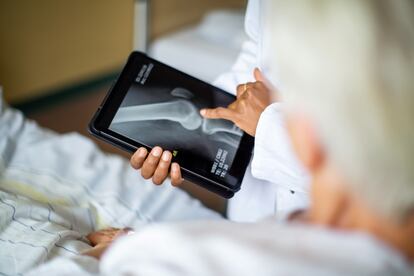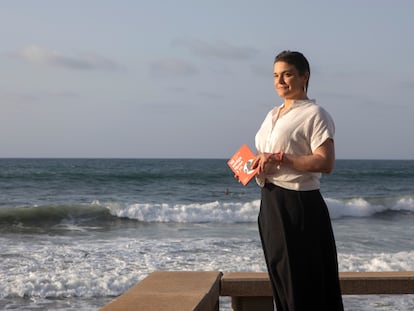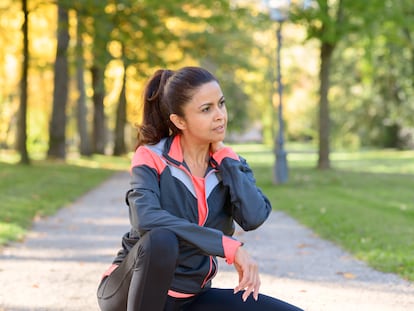Exercising to maintain bone health through menopause
Anti-osteoporosis benefits increase upon incorporating progressive strength workouts into your routine, especially ones that impact the lower body, plus balance challenges and higher-impact activity

Laura just got back from the doctor’s office with a clear diagnosis: at 51 years old, more than a year after her last period, she has just entered into her post-menopausal stage. She is beset by doubts, but more than anything, she’s concerned about osteoporosis. Her doctor told her all about the recognizable characteristics of this period, and the importance of physical exercise and leading an active lifestyle. But how will this affect her bones and what can she do to compensate for menopause’s deleterious health impacts?
In this stage of life, there is a decrease in the production of female sex hormones (estrogens and progesterone). In particular, estradiol has a beneficial effect on bone health and, as a result, its loss during menopause contributes to an accelerated drop in bone mineral density. This is called osteopenia and, in more advanced stages, bone may lose density and its structure may deteriorate to the point of osteoporosis (meaning porous bone), or even bone fracture.
Physical exercise is a fundamental tool in the prevention and reversal of osteoporosis. Studies show that exercise is ideal for preventing fractures and reducing the number of potential falls, especially when it is focused on the regions most affected by the loss of bone mineral density in the lower back: the head and neck of the femur and the hips region; these are, in turn, the areas most prone to suffer from an osteoporotic fracture.
Scientific research has suggested moderate benefits of physical exercise on bone mineral density in the lumbar region, femur and hip in postmenopausal women, regardless of bone status or menopausal phase. There has also a favorable impact, regardless of the type of exercise (aerobic, strength or combined) detected in regards to improving bone mineral density.
The effect of exercise on bone mineral density loss may be more beneficial in earlier stages of menopause as compare to later stages. Studies are clear: people who do higher-impact activities and strength training have 1% to 3% lower bone mineral density loss than people who do not exercise; and the benefits are greater if progressive strength exercises are incorporated, especially those that impact the lower body.
However, there are certain physical activities that are less helpful due to their lack of stimulus on the bone, and that will not produce the same benefits as the aforementioned activities. Although aerobic training may be beneficial for other areas of health, swimming or cycling is not recommended if the objective of the training is to improve bone health.
In other news, recently-uncovered scientific evidence indicates a possible negative effect associated with long-term contraceptive use, especially with drugs that are based solely on progestogens. If you have reached menopause and have been taking contraceptives for a prolonged period of time, exercise is essential for bone health.
Based on these findings, here are the latest recommendations that were published in 2022 by the UK Consensus Statement on physical activity and exercise for osteoporosis:
To improve bone strength:
Higher-impact exercises:
- Type of activity: transition from low-impact activities (walking, high stepping, stair climbing, Nordic walking, etc.) to moderate-impact exercises (small hops, skipping, jogging, Zumba, racquet sports, team sports, etc.). It is important to include a variety of movement (changes in direction, speed, etc.).
- Frequency: most days. 20-minute sessions are enough. If you are introducing moderate impacts (jumping, jogging, changes of direction), 50 such impacts per session is enough.
Strength exercises:
- Type of activity: strength training, preferably with weights, both upper and lower limbs. Spine and hip extension exercises are particularly important, and so is increasing the amount of weight you lift.
- Frequency: 2-3 times per week with 3-4 sets per exercise is enough. Building muscle mass will benefit bone health.
- Intensity: Increase the weight you lift. First, prioritize technique and then try to work with weights using 80-85% effort (heavy weights).
Balance challenges:
Targeted strength and balance training can prevent falls, a very important factor in avoiding fractures.
- Type of activity: targeted balance exercises or activities such as tai chi, dance, yoga or pilates.
- Frequency: 2-3 times per week. But if you have recently had a fall, it’s recommended that you do them daily.
Posture exercises and abdominal (core) strength training:
- Type of activity: core exercises, especially those that are focused on spinal erectors. Other kinds of activity that contributes to this goal are swimming, yoga and pilates.
- Frequency: 2-3 days per week.
All that being said, the level of bone mineral density of the person starting the training program must be taken into account when choosing exercises, since training will be different for a person with osteoporosis versus someone with a normal level of bone mineral density. Because of this, it is always advisable to work with a professional trainer.
Exercising is a fundamental part of our health, especially when menopause begins to put us to the test. We’ve got to meet its challenge with movement and life.
Sign up for our weekly newsletter to get more English-language news coverage from EL PAÍS USA Edition
Tu suscripción se está usando en otro dispositivo
¿Quieres añadir otro usuario a tu suscripción?
Si continúas leyendo en este dispositivo, no se podrá leer en el otro.
FlechaTu suscripción se está usando en otro dispositivo y solo puedes acceder a EL PAÍS desde un dispositivo a la vez.
Si quieres compartir tu cuenta, cambia tu suscripción a la modalidad Premium, así podrás añadir otro usuario. Cada uno accederá con su propia cuenta de email, lo que os permitirá personalizar vuestra experiencia en EL PAÍS.
¿Tienes una suscripción de empresa? Accede aquí para contratar más cuentas.
En el caso de no saber quién está usando tu cuenta, te recomendamos cambiar tu contraseña aquí.
Si decides continuar compartiendo tu cuenta, este mensaje se mostrará en tu dispositivo y en el de la otra persona que está usando tu cuenta de forma indefinida, afectando a tu experiencia de lectura. Puedes consultar aquí los términos y condiciones de la suscripción digital.
More information
Últimas noticias
Most viewed
- Sinaloa Cartel war is taking its toll on Los Chapitos
- Oona Chaplin: ‘I told James Cameron that I was living in a treehouse and starting a permaculture project with a friend’
- Reinhard Genzel, Nobel laureate in physics: ‘One-minute videos will never give you the truth’
- Why the price of coffee has skyrocketed: from Brazilian plantations to specialty coffee houses
- Silver prices are going crazy: This is what’s fueling the rally










































